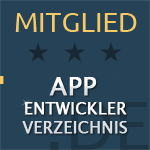
Insight

Insight

Insight
Successful application of the YAGNI principle in Flutter projects


Julian Giesen
·
·
Monday, July 8, 2024


Julian Giesen
In app development, design principles play a central role in creating efficient, maintainable, and user-friendly applications. Especially in the world of Flutter development, it is important to understand and apply these principles in order to fully leverage the platform's capabilities. One of these principles, which is often overlooked but of great importance, is the YAGNI principle – "You Aren’t Gonna Need It".
The YAGNI principle is a pillar of agile software development that aims to avoid unnecessary code and redundant features. It encourages developers to implement only what is currently necessary and to avoid speculative extensions. This not only leads to cleaner code but also significantly reduces the complexity and maintenance costs of a project.
For Flutter developers, applying the YAGNI principle offers numerous advantages. It helps shorten development time, utilize resources more efficiently, and improve code quality. In this article, you'll learn how to implement the YAGNI principle in your Flutter projects to create a more sustainable and effective development environment.
What is the YAGNI Principle?
The YAGNI principle, short for "You Aren’t Gonna Need It", is a fundamental concept in agile software development. It was popularized in the context of the Extreme Programming (XP) methodology and encourages developers to implement only what is currently necessary. The basic idea behind this principle is simple: by avoiding redundant code and unnecessary features, the complexity of a project is reduced, leading to better maintainability and higher efficiency.
Definition and Origin
The YAGNI principle emerged in the late 1990s as part of Extreme Programming, one of the first agile methodologies. Kent Beck, one of the founders of XP, recognized that developers often tend to implement features they think they might need for future requirements or potential extensions. This foresight may seem reasonable but often results in bloated code that is difficult to maintain and test.
Core Thoughts Behind "You Aren’t Gonna Need It"
The core message of the YAGNI principle is that one should develop only what is actually needed. This means that every line of code, every feature, and every component should be checked for its immediate necessity. If there is no clear, current need, the implementation should be postponed or discarded altogether.
The benefits of this approach are manifold:
Reduced Complexity: By focusing on what is essential, the code remains clearer and easier to understand.
Improved Maintainability: Less code means fewer places where errors can occur, which facilitates maintenance and further development.
Efficiency: Development time and resources are better utilized as the team focuses on truly important tasks.
Why It Is Important in Software Development
In the fast-paced world of software development, time and resources are often scarce. The YAGNI principle helps conserve these valuable resources by avoiding unnecessary work. Furthermore, it increases the flexibility of a project since changes and adjustments can be made more easily when the code is less complex.
For Flutter developers, applying the YAGNI principle means focusing on their app's core functionalities and ensuring that these are stable and well-tested before adding additional features. This leads to more robust and user-friendly applications that can be brought to market faster and are easier to maintain.
YAGNI Principle in the Context of Flutter
The YAGNI principle can be particularly well-applied to development with Flutter. The framework offers a variety of pre-built widgets and high flexibility, making it easy for developers to quickly create functional and attractive apps. However, this very flexibility can entice them to write more features and code than are actually needed. This is where the YAGNI principle comes into play.
Application in Flutter Projects
When working with Flutter, developers should always ensure to implement only the necessary functionalities. This means focusing on the core requirements of the application and temporarily ignoring all features that are not immediately needed. This approach leads to a leaner and more efficient codebase that is easier to maintain and extend.
A concrete example: If you are developing an app that fetches and displays data from an API, initially focus on the core functionality – the API call and data display. Additional features such as complex filter options or an offline storage function can be added later when they are truly needed.
Practical Examples and Benefits
State Management: Instead of integrating a complex state management tool like BloC from the start, one can begin with simpler solutions like Provider or setState. Only when the application grows and the demands on state management increase should a more comprehensive solution be implemented.
UI Design: Initially focus on the basic user interface and the key interactions. Detailed customizations and additional animations can be added later when the basic functions are stable and user-friendly.
Modularization: Break the code into small, easily maintainable modules. Only implement the necessary modules and add additional components when they are truly needed.
Benefits for Flutter Developers
Applying the YAGNI principle in Flutter projects offers several benefits:
Faster Development Times: By focusing on what is essential, development time can be significantly reduced.
Better Maintainability: Leaner code is easier to understand and maintain, which facilitates future modifications and extensions.
Resource Efficiency: Resources such as memory and processing power are used more efficiently, which is particularly advantageous for mobile applications.
Quality Assurance: Less code means fewer potential sources of errors and easier testability.
By consciously applying the YAGNI principle, Flutter developers can not only make their projects more efficient but also significantly enhance the quality and sustainability of their apps.
Practical Application of YAGNI in Flutter Projects
The practical application of the YAGNI principle in Flutter projects requires discipline and a clear focus on current requirements. Here are some concrete steps and tips on how to effectively implement the principle in your projects.
Identification of Unnecessary Features and Code
Requirements Analysis: Start each project with a thorough requirements analysis. Identify the core functionalities that your app absolutely needs to fulfill its purpose. Everything beyond that should initially be set aside.
Prioritization: Create a list of desired features and prioritize them based on their importance and urgency. Implement the most important functionalities first and regularly check whether the planned expansions are truly necessary.
Iterative Development: Develop your app in small, manageable iterations. After each iteration, review which features were really needed and which could possibly be discarded or postponed.
Tips for Implementing YAGNI
Minimalist Architecture: Choose an architecture that is simple and easy to understand. Avoid using complex patterns or technologies that are not absolutely necessary. A simple provider model is often sufficient instead of resorting to more complex solutions like Riverpod or Bloc from the start.
Refactoring: Conduct regular code reviews and refactoring sessions to remove unnecessary code and keep the codebase lean. This helps improve maintainability and increase code quality.
Avoiding Speculative Design: Implement only the functions that are immediately needed. Resist the temptation to implement features for future contingencies. If it later turns out that an additional feature is needed, it can then be added.
Tools and Techniques to Support
Code Analysis Tools: Use tools like Dart's analyzer or flutter analyze to identify unnecessary code and potential areas for improvement. These tools help you keep your codebase clean and efficient.
Unit Tests: Write unit tests for your core functionalities to ensure they work correctly. Through testing, you can ensure that changes and expansions do not impact existing functionalities.
Automated Builds: Implement a continuous integration system (CI) that checks and builds your code with each commit. This helps detect errors early and ensures that your codebase is always in a functional state.
Practical Examples
Simple UI Build: If you are creating a simple to-do app, start with the core functionality: adding, displaying, and deleting tasks. Features like task prioritization, recurring tasks, or a complex filter function can be added later when the base functions are stable and user feedback suggests it.
Network Requests: Initially implement only the necessary API calls to load and display the basic data. More complex features like caching or offline support can be added later as the app grows and these functions are truly needed.
By consistently applying the YAGNI principle, you can ensure that your Flutter projects remain lean, efficient, and maintainable. This not only leads to better code quality but also saves time and resources that you can invest in the truly important aspects of your app.
Conclusion
Applying the YAGNI principle in Flutter projects offers numerous benefits and is a crucial factor for efficient and sustainable app development. By focusing on current requirements and avoiding unnecessary features and code, you can significantly reduce the complexity of your projects. This leads to better maintainability, faster development times, and an overall higher quality of code.
The YAGNI principle helps developers utilize their resources more efficiently and focus on the essential functions of their applications. Through iterative development and regular review of requirements, you can ensure that your app always meets user needs without carrying unnecessary baggage.
The YAGNI principle supports agility in app development by avoiding unnecessary code and focusing on what truly matters.
By consistently applying YAGNI and utilizing the tools and techniques presented, you can significantly improve the quality of your Flutter apps and achieve more successful projects in the long run.
All insights
All insights
“Flutter and the related logo are trademarks of Google LLC. We are not endorsed by or affiliated with Google LLC.”
“Flutter and the related logo are trademarks of Google LLC. We are not endorsed by or affiliated with Google LLC.”
Copyright ©2025. Julian Giesen. All rights reserved.
“Flutter and the related logo are trademarks of Google LLC. We are not endorsed by or affiliated with Google LLC.”






